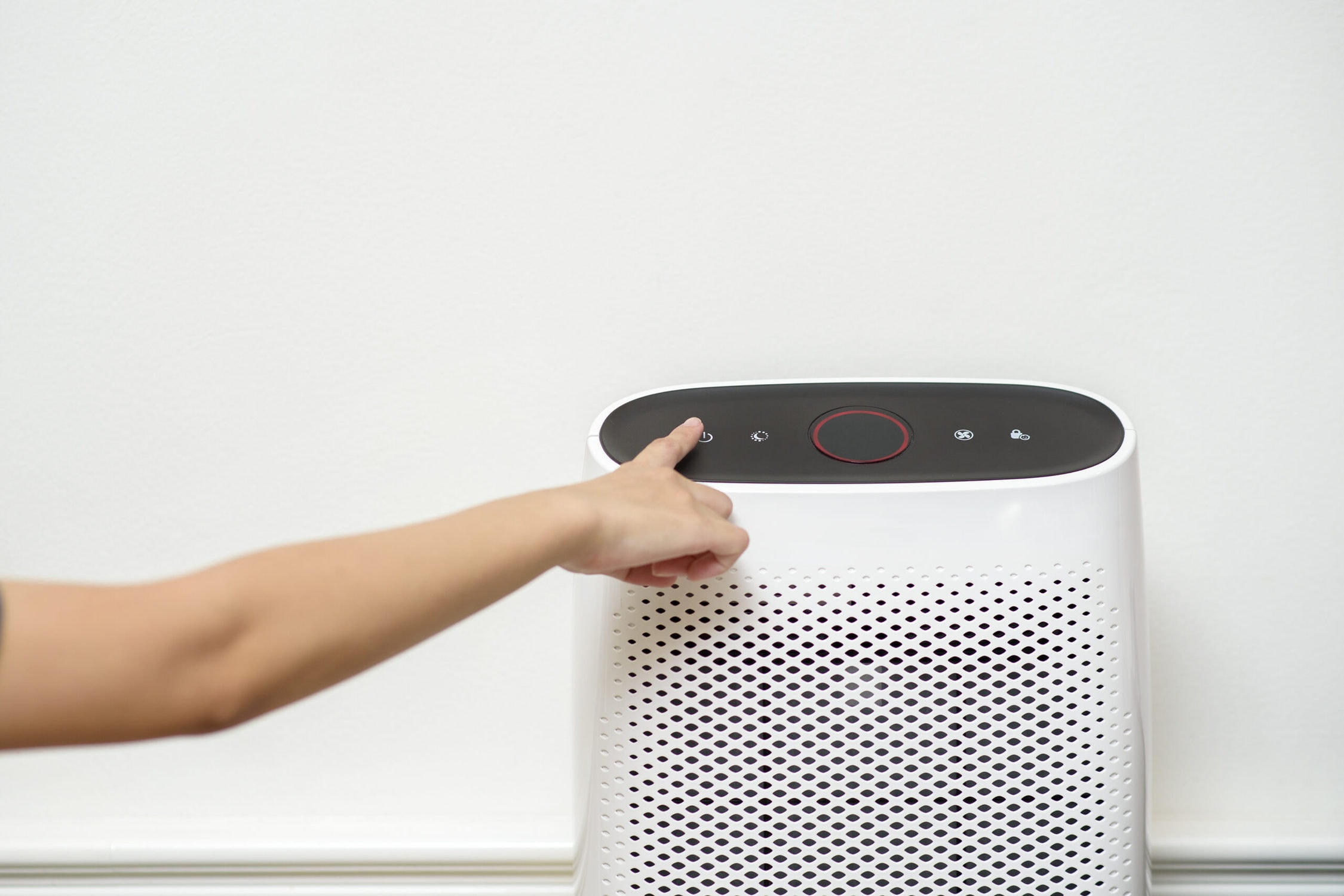
Do you struggle with breathing problems or dust build up in your home? If so, you may have considered getting an air purifier but wondered if it lives up to the hype.
Well, we’re here to help you out by explaining what air purifiers actually do, how to choose the best purifier to fit your needs, the many types of air purifiers, and how to take care of one once you buy your favorite.
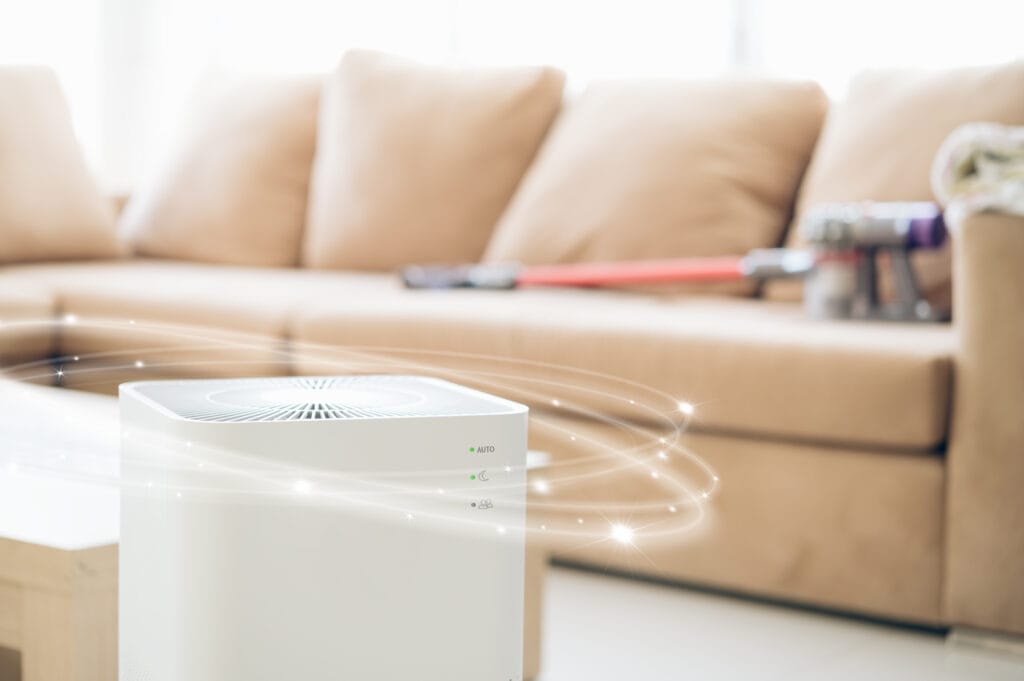
Feel free to use the table of contents to navigate directly to the topic that interests you most. Hopefully, you’ll find all your most pressing air purifier questions right here.
Air Purifier Basics
What is an Air Purifier?
The air around us is swirling with dust, smoke, dirt, germs, and bacteria. Air purifiers seek to remove the majority of those impurities from the air, giving us fresher, cleaner air to breathe.
This process can reduce breathing problems due to allergens in the air, as well as keeps your home cleaner by reducing dust build-up. Pet dander and fur are also common triggers of asthma, allergies, and COPD and can be reduced through the use of an air purifier.
These powerful devices can pack a big punch in keeping indoor air clean, fresh, and allergen free as well as provide other benefits.
How Does an Air Purifier Work?
So, how does it accomplish this and does it actually work?
Air purifiers contain one or more filters inside the unit. Indoor air is drawn in by a fan, which forces air through the filter system. The filters, which are made of a variety of materials, trap and hold the impurities, allowing cleaner air to be released into the room.
Depending on the type of filters and accessories in your purifier, your air may be sanitized and should be odor free after a trip through the filters. This improves the air quality for every living creature inside your home.
Purifiers may contain UV lights, which are used for the sanitizing process or emit negative ions into the air, which attract and neutralize positive air ions. The negative ion process can also release harmful ozone into the air so you’ll want to be cautious.
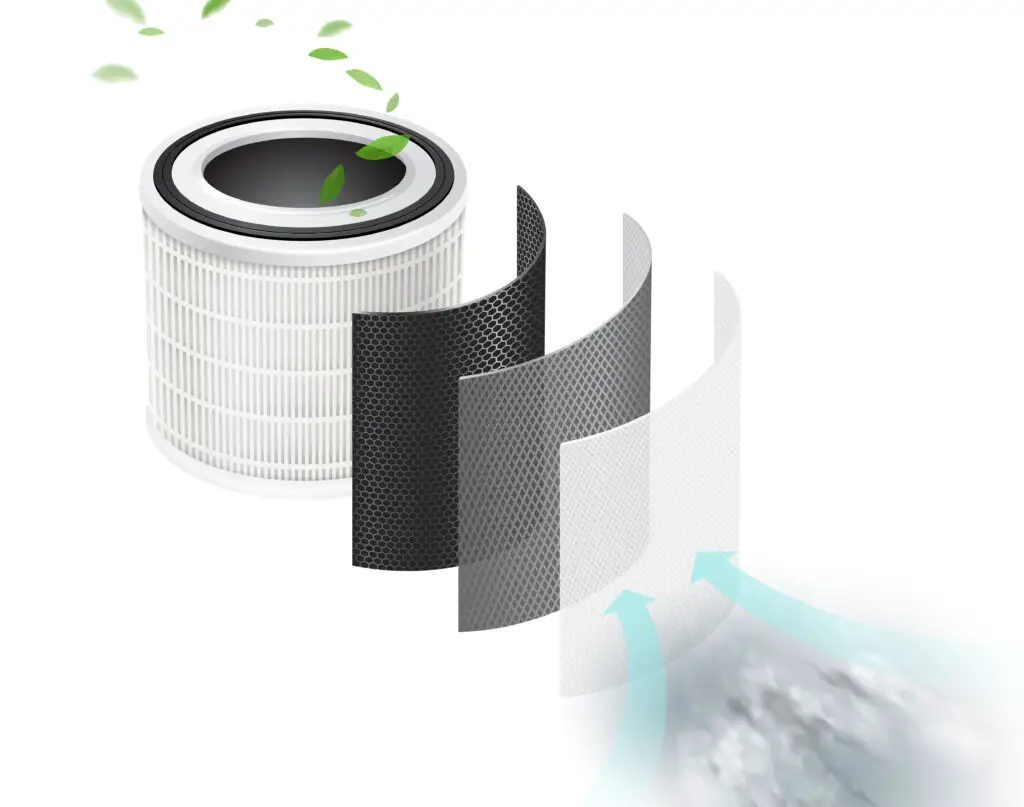
The size of particles your unit can capture will depend on the type of purifier and filter(s) your unit has. The way air purifiers work may seem mysterious and wonderful, but it’s really a fairly simple multi-stage filtration process.
Types of Air Purifiers
Now that you know how they work, you are probably interested in what types of air purifiers are out there and which are best for you and your home.
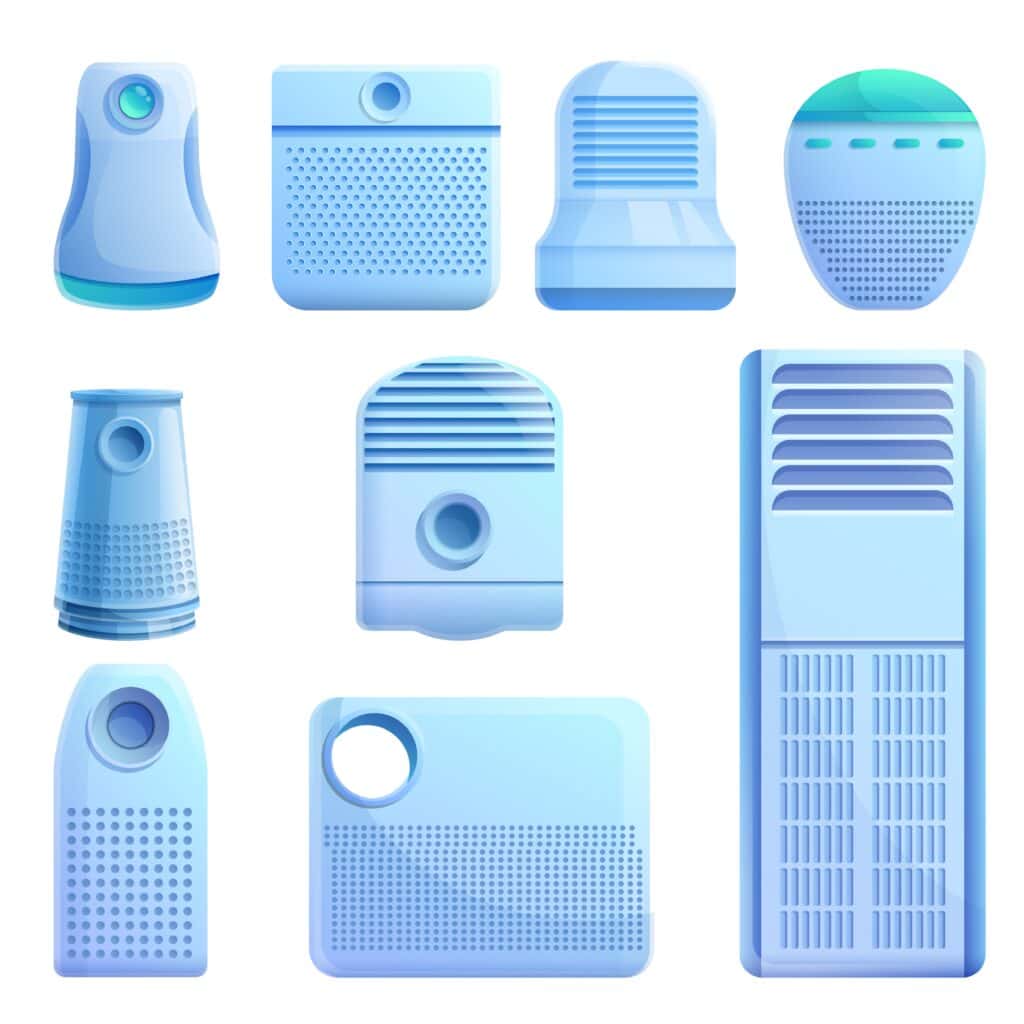
UV
In addition to the filters, a UV air purifier contains an ultraviolet bulb which inactivates many viruses, mold, and bacteria circulating through the air. This effectively sanitizes the air as well as removing harmful particles.
The downside to this type is that it emits potentially harmful ozone into the air and cannot be used while people or pets are present.
HEPA Filtration
HEPA (High Efficiency Particulate Air) filters use a series of tiny holes of varying sizes, trapping 99.97% of particles from the air. This is considered a highly effective way of eliminating most impurities from the air and most people looking for a high level of air purification will want this type.
Ozone
Ozone purifiers are very controversial, even though they are often used by hospitals. These units emit “ozone” or O3 molecules, shocking the air and killing any impurities and pathogens. The issue with these is that the O3 is toxic to living creatures as well and must be used when no one is present. Typically, you should be well-educated in the proper usage of one of these prior to using one, as they can potentially cause problems in humans and animals.
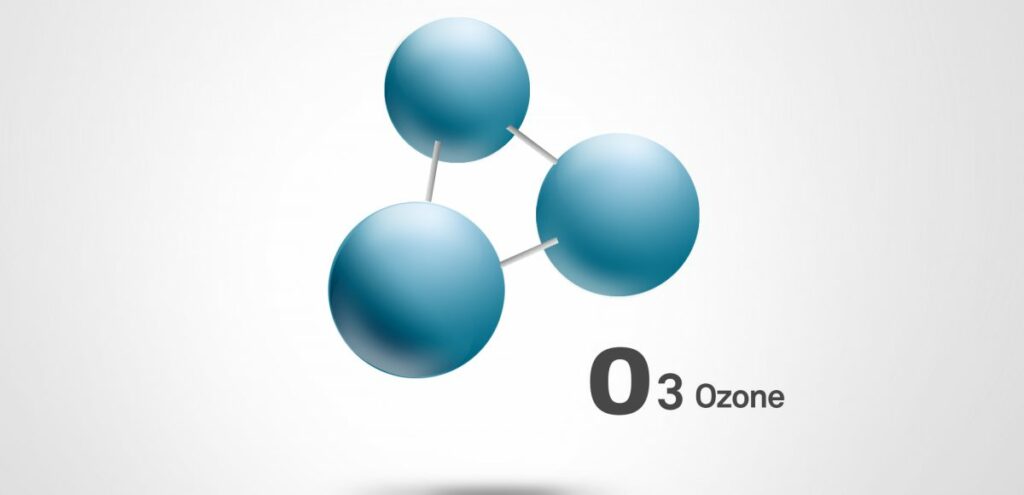
Activated Carbon
Activated carbon is known for its purification properties and is used in a variety of ways, including in health care. Activated carbon is rarely the only method in a purifier, since it has limitations, such as the inability to remove dust mites or mold. However, it is able to remove odors and some VOCs that other filters cannot.
Ionic Air Cleaners
Ionic air cleaners are known by a variety of names including, electrostatic air cleaners, air ionizers, and ion generators. These are known as filterless air purifiers which emit an electrical charge and utilize positive and negatively charged plates to attract particles to an oppositely charged plate and trap them. The plates can then be rinsed and reused.
Central Air Cleaners
True whole house purifiers are attached to your existing HVAC system and filters the air as it passes through. However, this type comes with a higher cost and must have your system running in order to filter the air. While some large portable air purifiers are marketed as “whole house” purifiers, they simply handle larger spaces and are not true central air cleaners.
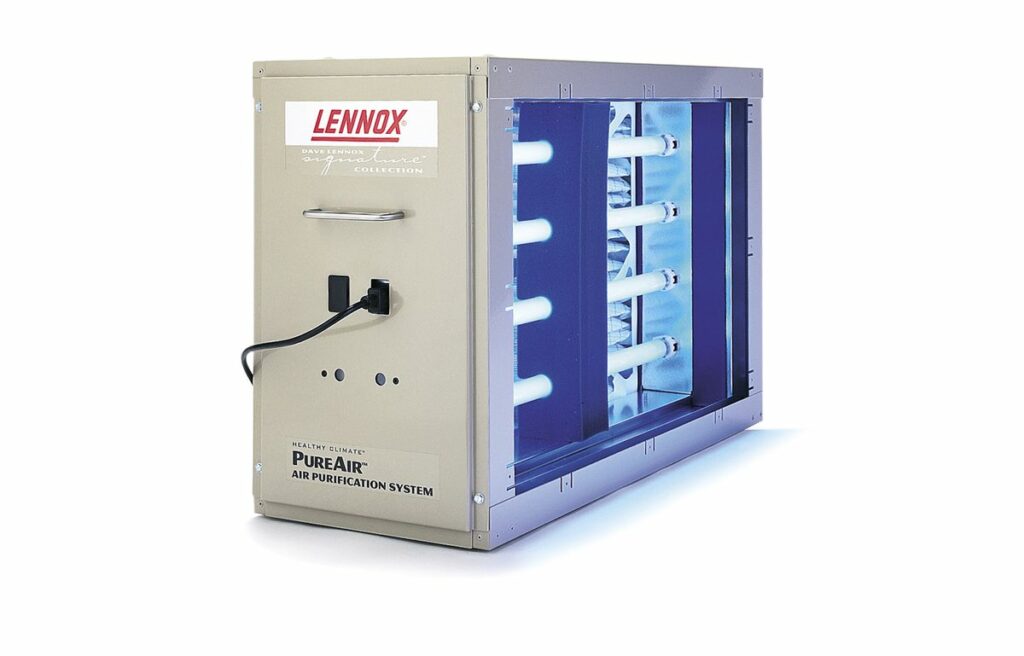
Read Before Buying an Air Purifier
Now that you know the basics, how do you decide on an air purifier? With so many brands, sizes, and types, which one will fit the bill?
Here are some helpful things to consider when looking for a unit for your home.
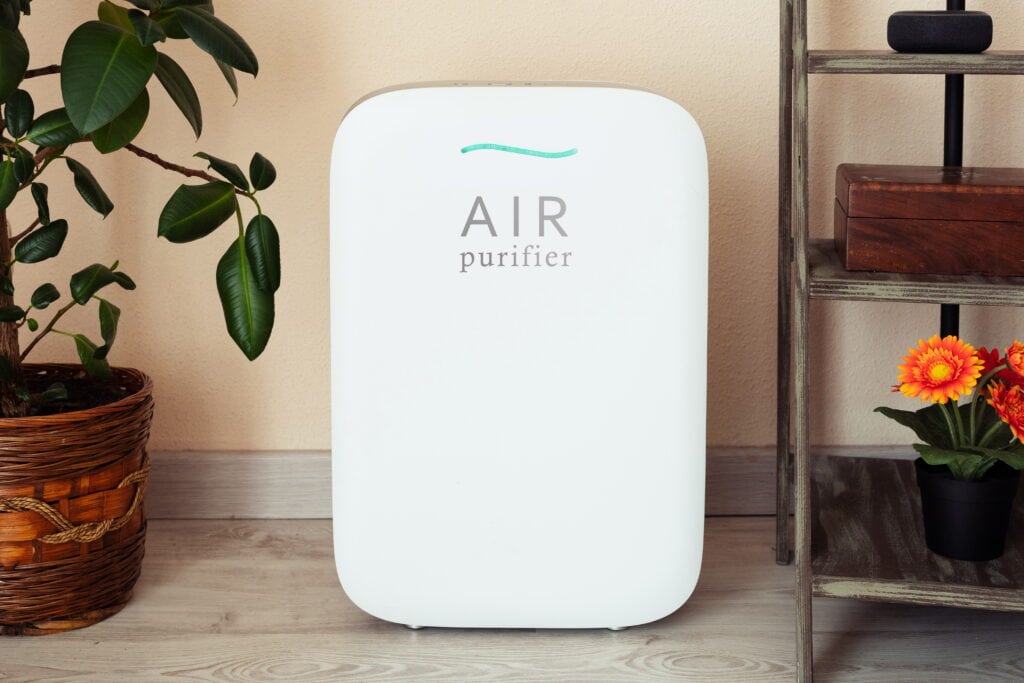
What Size of Air Purifier Do I Need?
Choosing the right size is vital to achieving the results you desire. If your unit is too small, it won’t be able to effectively filter all the air in your room or home. A larger-than-necessary unit will clean the air with no problem, though you’ll likely pay more for the unit and it will use more electricity and be less energy efficient. Therefore, like Goldilocks, you’ll want to find one that is just right.
The most important thing you’ll need to know the square footage of the space where you will use the purifier. Air purifiers list the square footage they are suitable for, so you will be able to use the size of the space to determine the unit you’ll need to buy.
How to Choose an Air Purifier
Now that sizing is out of the way, here are some other things to consider when choosing an air purifier.
Where to Place the Unit
If you are looking to clean air in a single room, this is pretty easy. However, if you are choosing a smaller unit, you need to decide which area needs the most clean air.
You’ll want the cleanest air in the spaces where people spend the most time.
Special Factors
If you have high ceilings (over the standard 8 ft), you’ll need to consider cubic feet of your space instead of square footage.
If you need a purifier to handle a large amount of pets, smoke from internal or external sources, or extreme dust, you should consider choosing a larger unit to keep up with your needs.
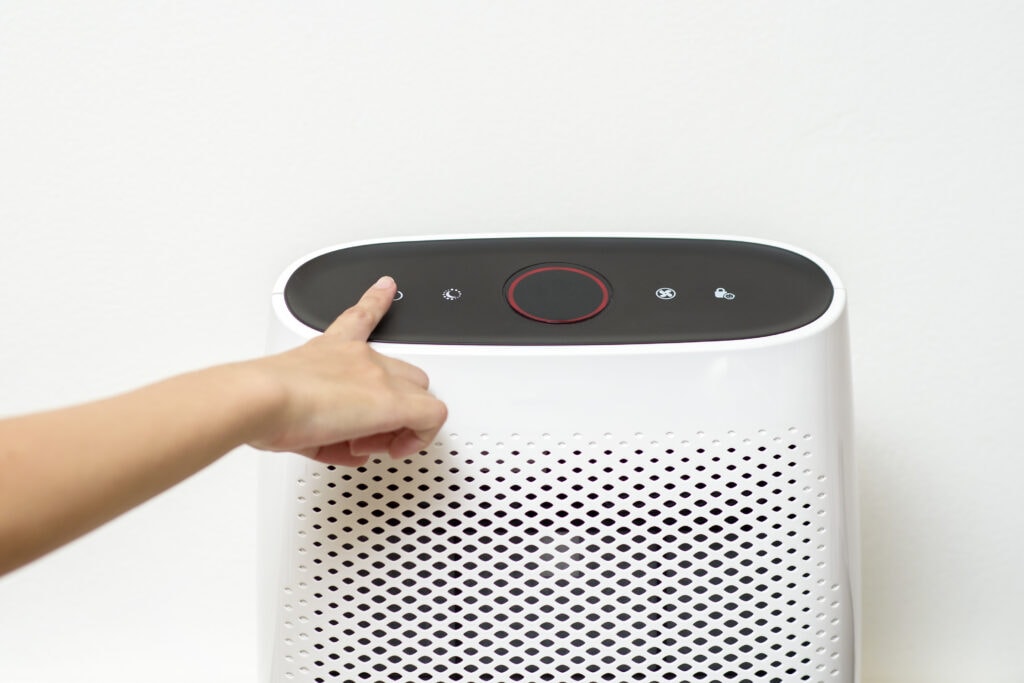
CADR Rating
The CADR (Clean Air Delivery Rate) is a rating that indicates the effectiveness of the purifier. It takes into account the amount of air circulating through the unit and the effectiveness of removing particles based on both size and percentage of particles removed.
Maintenance
The cost and frequency of maintaining a unit needs to be considered. Some filters can be pricey and replacing them monthly, could add to your overall costs considerably.
Noise Level
While these units are meant to fade into the background, the fact is, they are sucking in and blowing out air constantly while in operation. Depending on where you will place it, you should consider the decibel level and whether you need to find a quieter air purifier if noise is an issue.
Popular Air Purifier Brands
Some brands come out on top in this category. These brands are innovators in their field and are constantly producing quality products to keep the air inside our homes clean and safe.


Check out the products from these air purifier brands to find one that is right for you. These reputable brands won’t disappoint.
- Rabbit Air
- IQAir
- Blueair
- Honeywell
- Levoit
Air Purifier Maintenance Tips
Although air purifiers provide a host of benefits, they are subject to problems and necessary maintenance to keep them functioning optimally. Here are some things you can do to keep your purifier working to its potential.
Common Air Purifier Issues
Here are some common things you may run into with an air purifier.
Purifier Won’t Turn On
Of course, you’ll want to be sure your unit is plugged in and you are using the controls correctly. If so, unplug and try a different power outlet. If it still doesn’t work, check your manual to see if your unit has a reset button. If all else fails, call the manufacturer for service.
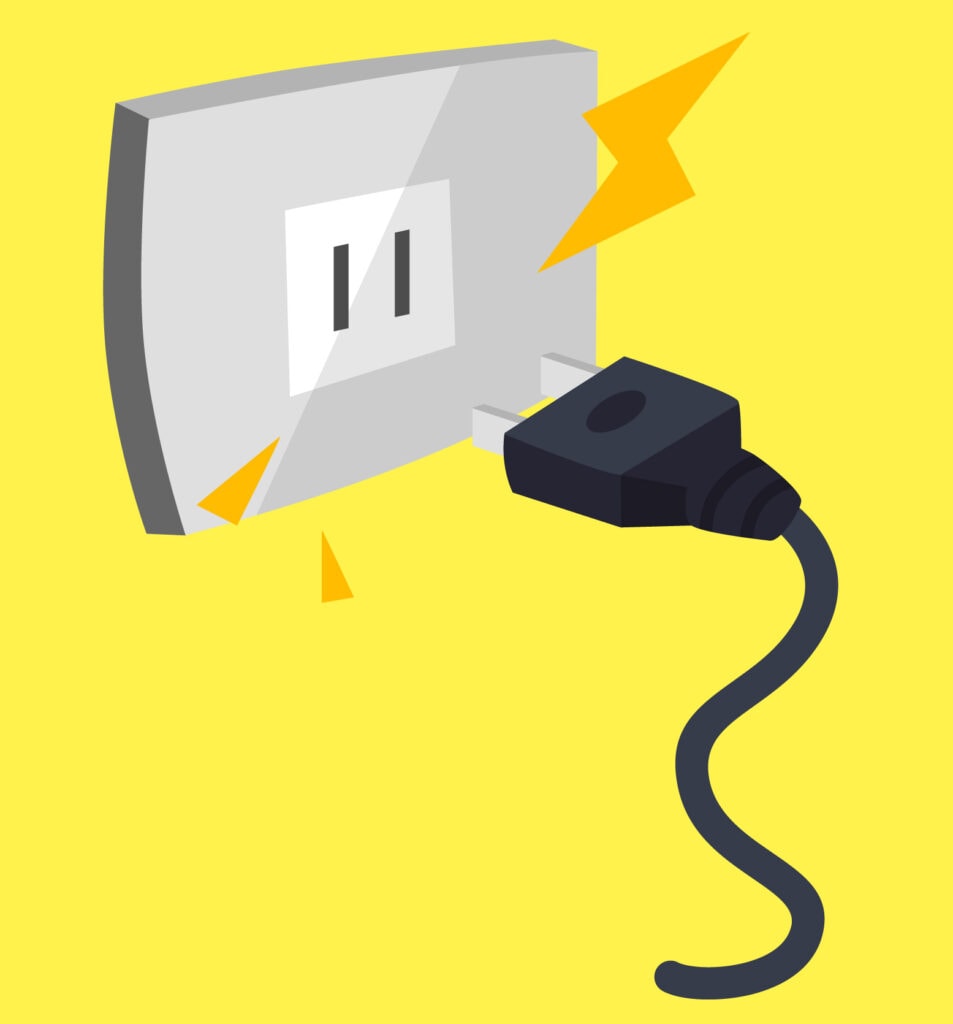
Purifier Is Not Cleaning the Air
If you are not experiencing the clean air you’d expect, it may be that you have purchased the wrong size unit, if so, buy a larger size or put the unit in a smaller area.
Next, check the filter. A dirty, improperly placed, or lack of a filter can cause the purifier to not function properly.
Lastly, ensure the unit is not blocked in any way. Blocking either the intake or vent can reduce the purifier’s effectiveness.
Purifier is Making Odd Noises
Air purifiers sometimes emit noise. This is common. However, if your unit is making a noise it’s never made before, you may have an object caught inside or a loose part. Try to remove any loose objects, make sure the unit is on a flat surface, and check the filter to make sure it is properly secured.
Air Purifier Troubleshooting
If your air purifier is not working the way it should, here are some general troubleshooting tips.
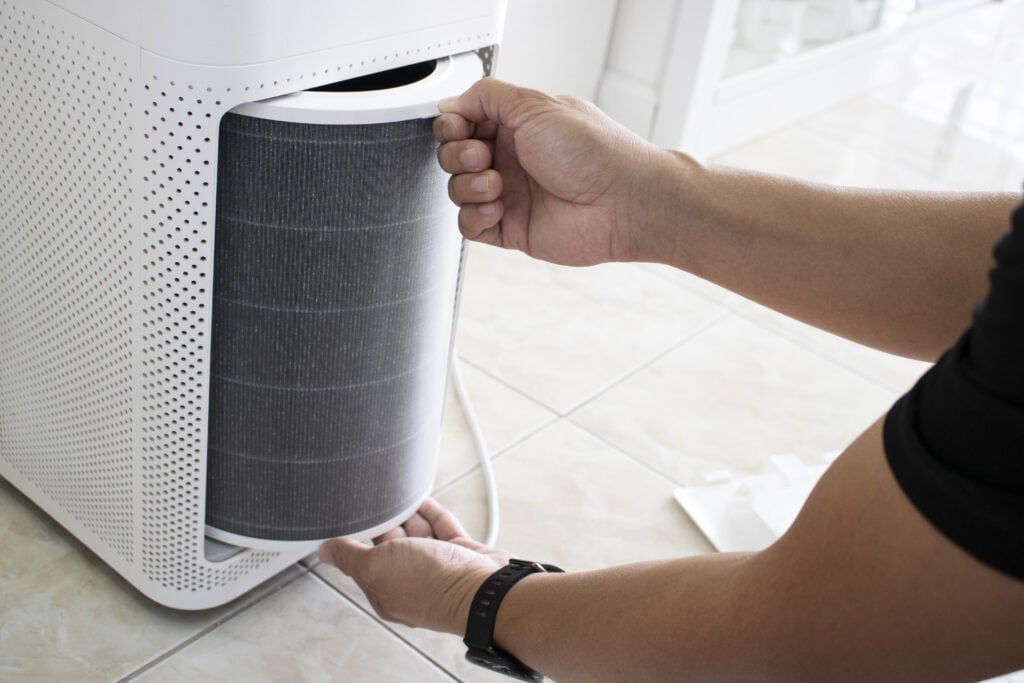
- Check the filter– a dirty or loose filter can explain many problems. If your filter is loose, it can cause noise, your unit may not function, or you might get an error. Try putting a new filter in and securing it to see if this fixes the problem.
- Be sure the unit is plugged in and is set properly. Try moving to a new outlet to see if it turns on and begins working. Also check the controls. Is the unit turned on and set to the correct settings? Are there any error lights or messages? If so, look in your user manual to see what these mean.
- Check for blockages and foreign objects caught in vents or inside the unit. Foreign objects are occasionally drawn in and can cause noise or make the unit inoperable. Check all the vents, remove the grilles, and clean thoroughly. Look inside the unit for any loose objects. You can also use a vacuum to remove any dirt build-up you can see inside.
If none of these seem to fix your issue, your next step is to contact the manufacturer or a repair center. It is not advised to take the unit apart if you are inexperienced.
How to Install an Air Purifier
Installing a portable air purifier is as simple as selecting the best location, removing packaging, installing the filter, and plugging it in.
Be sure to leave plenty of room around the purifier for air to be drawn in and expelled back into the area.
However, if you are adding a whole house air purifying system, it is recommended to hire a professional HVAC installer to install it. In some states, installing HVAC equipment yourself requires licenses and permits. Keep this in mind if you decide to do this yourself.
Depending on the unit, there are a variety of methods of installation. Here are the basic steps.
- Decide where the air purifier will be installed on your HVAC system. This may include detaching the intake hose or cutting a hole in the side of your furnace.
- Line up the purifier with the furnace and attach the two together. Use provided screws, notches, tabs, and aluminum tape to attach the two parts together.
- Attach the intake hose to the purifier.
- Seal any unnecessary openings with aluminum tape.
- Install filters in your purifier.
- Plug in the unit.
- Test to see if it functions properly, listen and feel for any air leaks.
Again, this process is best done by a professional and varies by unit. However, if you are up for the task and have the proper permits, go for it. Just have the number of an HVAC pro nearby just in case.
Here is a video to give you a basic idea of how it all fits together.
How to Clean an Air Purifier
Regular cleaning is always necessary when you invest in a product. And since air purifiers literally clean the air for you, a good thorough cleaning is needed to keep it functioning.
- Unplug your purifier for safety.
- Protect yourself- if using caustic chemicals or if you are sensitive to dust and allergens, you should wear gloves and a face mask.
- Assess the filter. Is your filter washable or permanent? Does it need to be replaced?
If your replaceable filter is dirty, toss it and make sure you have another on hand. If it is not exceptionally dirty, you can try vacuuming it to remove any loose dust or dirt. If your filter is permanent, vacuum both sides or soak in water, as stated in your manual - Clean or replace your pre-filter (if your unit has one).
- Wipe down your unit- concentrate on the vents and openings.
When cleaning, be sure to consult your user manual, as there are many types of purifiers and filters. Be sure to clean your filter according to manufacturer recommendations and use the proper size and type when replacing a disposable filter.
How Often Should I Clean an Air Purifier?
Cleaning frequency of an air purifier really depends on its usage. Air purifiers in very smoky, dusty, or pet areas should be cleaned often, as much as every 2-4 weeks. Purifiers that are lightly or intermittently used should be cleaned every 3-6 months.
Some purifiers notify you when a filter change is recommended. However, it is a good idea to inspect the filter to see if it looks like it needs to be washed or replaced. Sometimes vacuuming with a soft brush is a good in-between task to keep your unit in optimal condition.
When is it Time to Replace My Air Purifier?
Air purifiers can last a long time when cared for properly. Knowing when to replace yours comes down to how well it is functioning. Here are some ways to know your air purifier needs to be replaced:

- If your purifier is putting out little air, despite regular maintenance and cleaning.
- If the filters for your unit are no longer available, you may be forced to buy a new model.
- If you don’t feel like your purifier is filtering the air as well, and you’ve tried cleaning and replacing filters.
- If you’ve had your purifier for more than 5-10 years.
There are parts you can replace to extend your air purifier’s life such as UV bulbs and filters. Even permanent filters need to be replaced eventually. If you aren’t ready to say goodbye to your reliable purifier, you can try replacing these things first.
Can You Really Find a Quality Air Purifier That’s Affordable?
A great air purifier can cost anywhere from $50-$2,000 depending on what you need. The higher end represents whole house units that attach into your HVAC system. For a portable unit, you can find many options from budget air purifiers to high-end models.
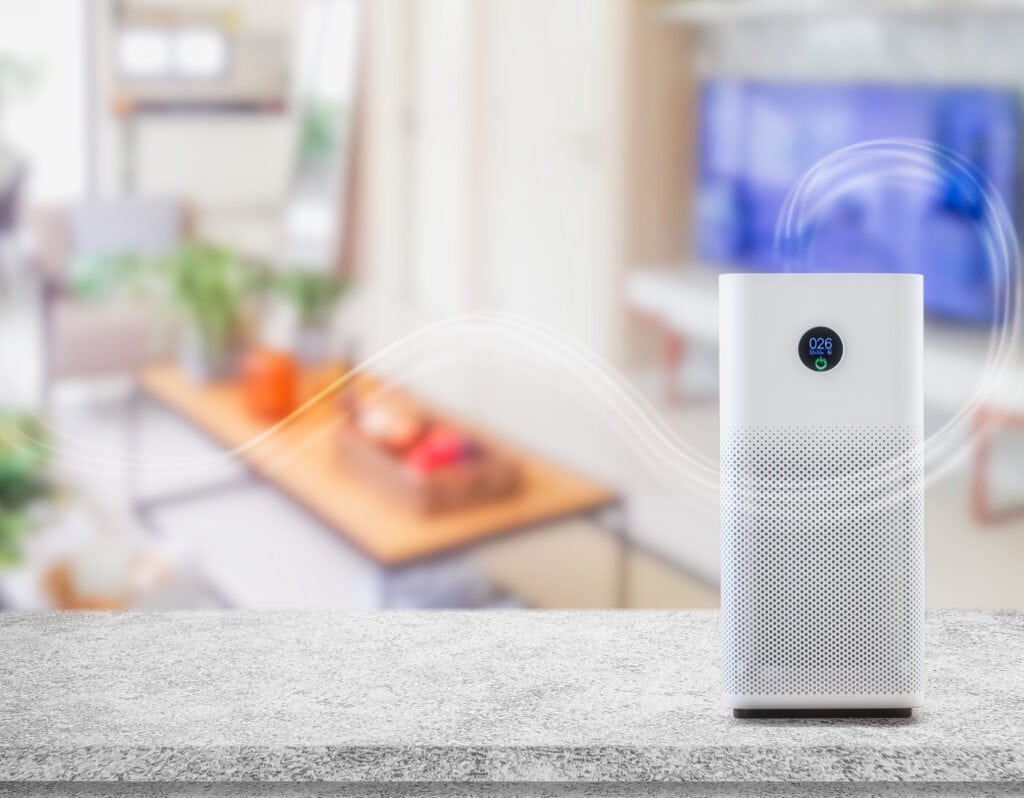
For a powerful purifier for weed smoke or vaping, you will need to be sure to get a unit with HEPA and/or carbon activated filtration, which will set you back a bit more. These have to work harder and eliminate much tinier particles, thus justifying the higher price.
However, if you’re looking for an average unit, there are plenty of options for under $300.
If your budget is even lower, you can still get a decent unit for under $100 for a smaller space. This means you’ll have to be selective about where you put it.
No matter how much you want to spend, you can find an air purifier that will fit the bill. You’ll just have to keep your expectations in line with the capabilities of the unit you get.
Conclusion
Whether you need to remove allergens, reduce mold, dust, or pet dander, or just want to breathe cleaner air, an air purifier is a great addition to your home.

Hopefully, you’ve found the answers you were looking for and are ready to buy your new air purifier. If you’re still on the fence, check out some of our other air purifier articles. Thanks for taking the time to stop by the page.

HVAC Training 101 is a participant in the Amazon Services LLC Associates Program, an affiliate advertising program designed to provide a means for us to earn fees by linking to Amazon.com and affiliated sites. Pages on this site may include affiliate links to Amazon and its affiliate sites on which the owner of this website will make a referral commission
